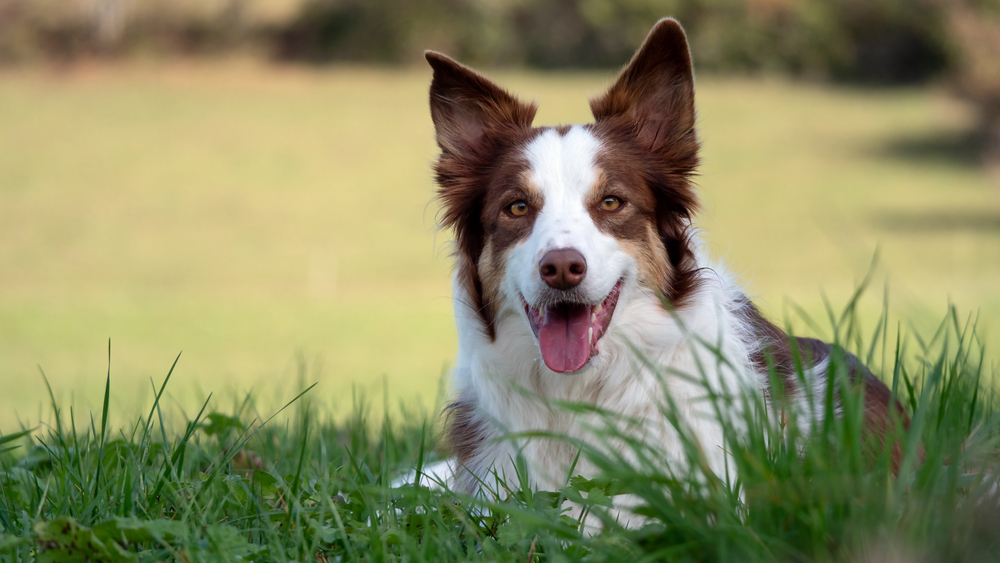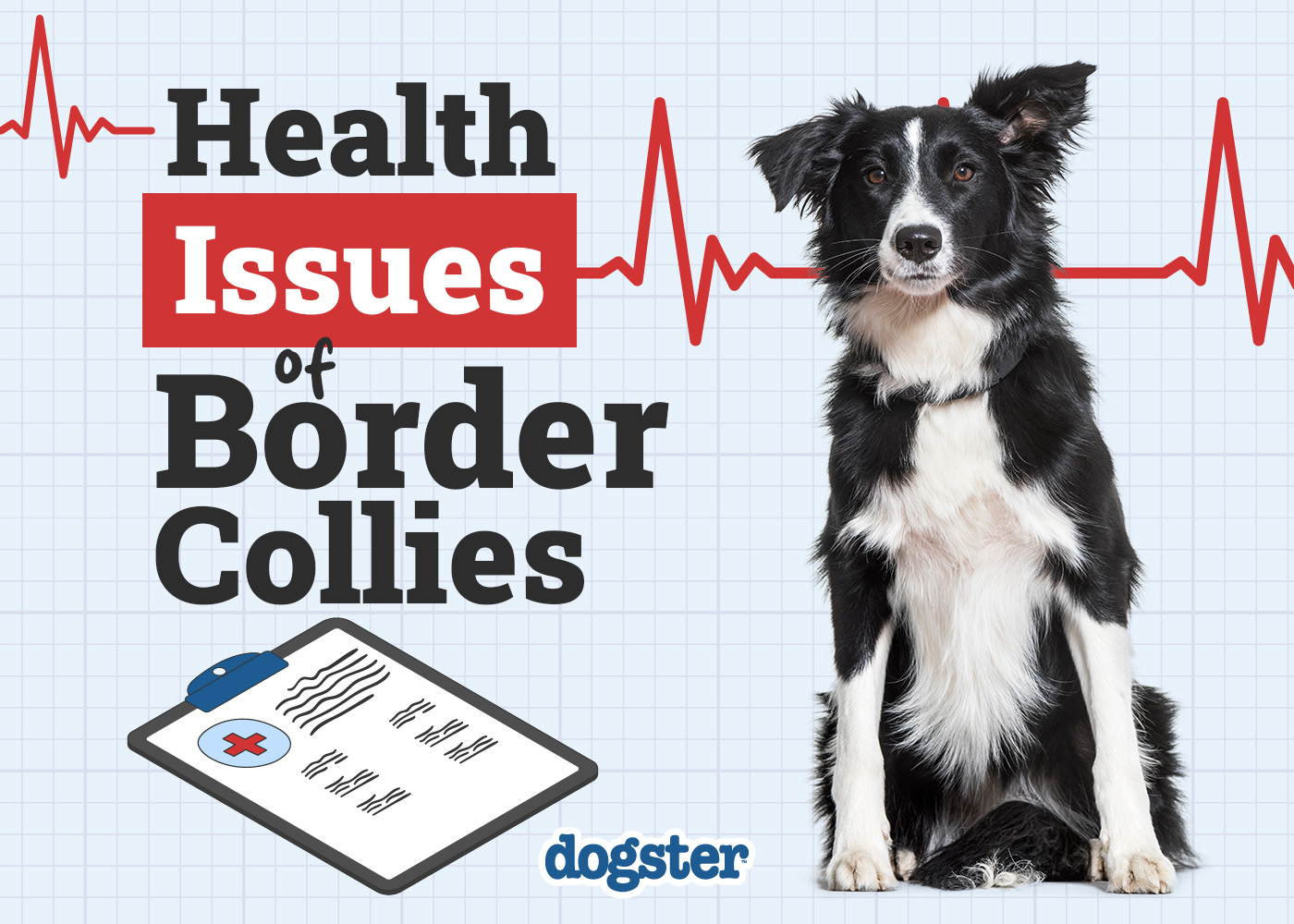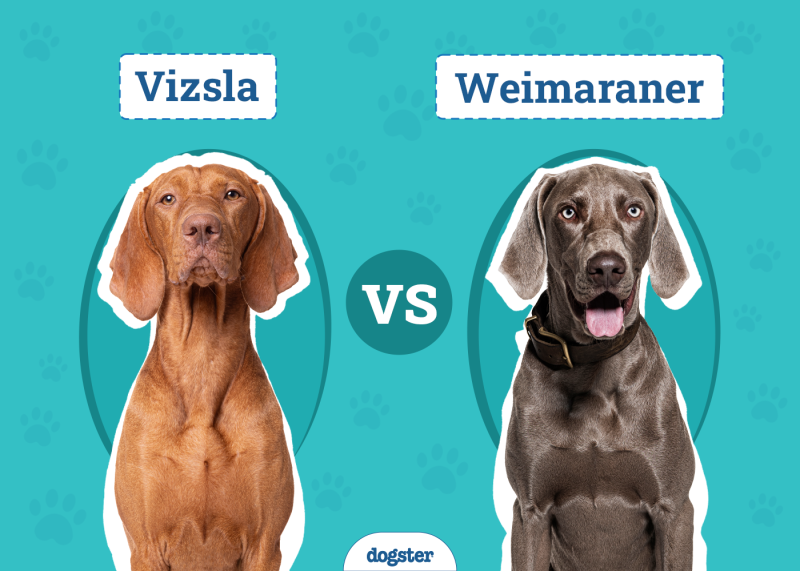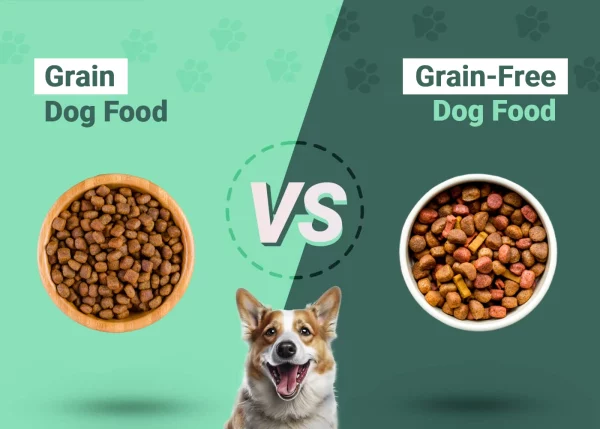Border Collies are wonderful pets for active singles and families with children. Their spunky personalities and love of physical activity make them unforgettable companions for your household. While they are a generally healthy and sturdy breed, they may be genetically predisposed to several health issues. It’s essential to be aware of these conditions, so you know how to recognize them if your pup starts showing any signs of them.
Keep reading to find the ten most common health problems in Border Collies.

The 10 Common Health Problems in Border Collies
1. Hip Dysplasia
- Decreased activity
- Hind-end lameness
- Swaying gait
- Decreased range of motion
- Reluctance to jump or run
A common health condition in Border Collies is hip dysplasia. This happens when the ball and socket of the hip joint do not fit together as they are supposed to, resulting in a loose joint. This can lead to inflammation, pain, and, over time, arthritis.
This condition can be caught early through an orthopedic exam and hip X-rays. The sooner this condition is detected, the better. If your Border Collie is diagnosed as a puppy, a surgery can be performed to allow a better hip joint to develop as your dog grows. In fully grown dogs, more invasive surgery is sometimes necessary in severe and life-limiting cases. It’s important to remember that overweight Border Collies can develop arthritis earlier and more severely than their thinner counterparts, so keeping your pup in tip-top shape is of utmost importance.

2. Epilepsy
- Collapsing
- Jerking
- Stiffening
- Muscle twitching
- Unconsciousness
- Drooling
- Foaming at the mouth
Epilepsy is a brain disorder that’s characterized by seizure activity. Several infectious and non-infectious diseases can cause seizures, but in idiopathic epilepsy, there may be no underlying disease to account for the seizures. This condition is a common hereditary disease in Border Collies, who typically start showing symptoms before six years of age. Your dog may need anti-seizure medication to control their epilepsy.
3. Collie Eye Anomaly
- Eyeballs sinking into sockets
- Eyeballs seem smaller than usual
- Ocular defects
Collie eye anomaly (CEA) is an inherited eye disease present at birth. It affects the retina, choroid, and sclera. It varies from mild to severe, with the latter potentially leading to blindness. An autosomal gene defect causes the condition, and no treatment is available. It can be challenging to detect until your pup begins to go blind.

4. Multidrug Resistance Mutation
Some herding dog breeds, like the Border Collie, can be born with a gene mutation called MDR1 (Multidrug Resistance Mutation). This abnormality can make dogs sensitive to the harmful effects of drugs commonly used by vets. Your vet can easily test for this mutation with a blood test and then recommend products and medications that are safe to use. Luckily, Border Collies have a less than 5% chance of carrying a defective copy of the MDR1 gene, compared to the 50% of Australian Shepherds that have been affected to some degree.
5. Imerslund-Gräsbeck Syndrome
- Lack of appetite
- Failure to gain weight
- Lethargy
- Malaise that intensifies after meals
Imerslund-Gräsbeck Syndrome (IGS) is a disorder where vitamin B12 cannot be absorbed through the gut. It is found most often in Beagles and Border Collies. This condition is caused by a mutation in the CUBN gene and causes an affected dog’s small intestine to be unable to absorb vitamin B12. Starting at around 6-12 weeks of age, the puppy shows signs of vitamin B12 deficiency.

6. Osteochondritis Dissecans
- Lameness
- Pain
- Limping
- Swollen joints
Osteochondritis Dissecans (OCD) is an inflammatory bone disorder resulting in joint cartilage lifting from the bone and secondary joint degeneration. It occurs in Border Collies most often in the shoulder. This condition happens when dogs grow too quickly as puppies, causing the cartilage in their joints not to develop correctly. Your pup may need surgery to fix the issue.
To minimize your dog’s risk of developing OCD, feed them a balanced diet to ensure they get the correct ratio of minerals and proteins. Don’t overfeed them since it can lead to unhealthy growth. Also, please do not allow them to engage in any high-impact or risky exercise.
7. Trapped Neutrophil Syndrome
Trapped neutrophil syndrome (TNS) is a genetic health issue that affects a dog’s immune system, leading to chronic infections. Affected puppies are often smaller than their littermates and may have developmental delays. They also sometimes have narrower skulls and more slender extremities. Dogs with TNS can begin having infections when they are as young as six weeks old. Some dogs will not show any signs of disease until they fall ill and cannot recover completely.
TNS is incurable and fatal. Most dogs will die after several months. However, medication and treatment can boost the quality of life and prolong life expectancy in affected dogs. In addition, genetic testing is available to test for TNS so breeders can be sure they’re not breeding dogs affected by this disorder.

8. Neuronal Ceroid Lipofuscinosis
- Anxiety
- Constant circling
- Aggression
- Loss of learned skills
- Compulsive behaviors
- Tremors
- Seizures
- Visual impairment
Neuronal Ceroid Lipofuscinosis (NCL) occurs thanks to a genetic mutation, resulting in neurological symptoms in affected dogs. Signs of the disease typically begin between ages one and two and can lead to a reduced lifespan.
Genetic tests are available so breeders can ensure they’re not breeding dogs that will develop NCL.
9. Patent Ductus Arteriosus
- Difficulty breathing
- Loud heart murmur
- Abnormal pulse
- Exercise intolerance
Patent ductus arteriosus (PDA) is a congenital and hereditary heart abnormality that Border Collies may be predisposed to. This condition can cause an overload of work on the left side of the heart, leading to changes in the heart and, eventually, heart failure and death.
Before dogs are born, the ductus arteriosus blood vessel provides a shortcut for blood to flow from the pulmonary artery to the aorta without going through the lungs. In normal dogs, the vessel closes at birth, but in those that have PDA, the vessel does not. Luckily, there is a surgery that can close the PDA and prevent heart problems.

10. Double Merle Matings
Merle is a beautiful mottled black/gray/white coloration in Border Collies that’s becoming increasingly popular. Unfortunately, this color variation can be associated with some genetic issues. If your dog’s mom and dad are both merles, 25% of their offspring will be double-merle pups. These pups are at a high risk of becoming blind, deaf, and having other congenital problems.
Remember to have regular vet visits when owning a Border Collie to keep their health and well-being. If you’re concerned about your dog’s health we suggest you speak to a vet.

Conclusion
Though your Border Collie may be more at risk for the ten above conditions, it doesn’t mean they will develop any of them. It is essential to know what health problems your pet may be predisposed to so you know what signs to watch for. Never skip your dog’s annual checkups at the vet; they can provide a baseline for your dog’s health so your vet can pick up on any anomalies before they become more severe.
- You may also want to read: Are Border Collies Hypoallergenic? Breed & Allergy Facts Explained
Featured Image Credit: BIGANDT.COM, Shutterstock



















